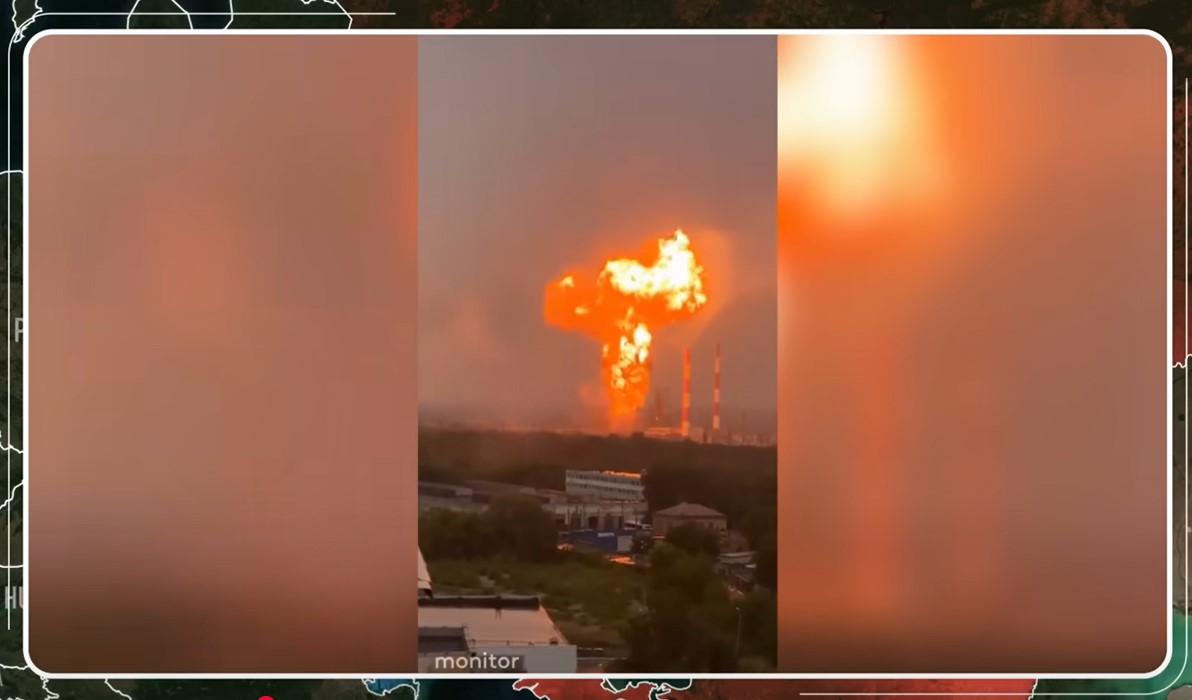Today, as Russian authorities were trying to repair the damage to oil refineries from previous Ukrainian attacks, the Ukrainians dealt them another devastating blow. By starting a new wave of strikes with long-range drones, the Ukrainian army targeted Russian oil production facilities to disrupt this key enemy source of income. Ukrainian forces have reignited their strategic campaign against Russia’s oil infrastructure, resuming targeted drone strikes on critical refineries after a calculated pause.
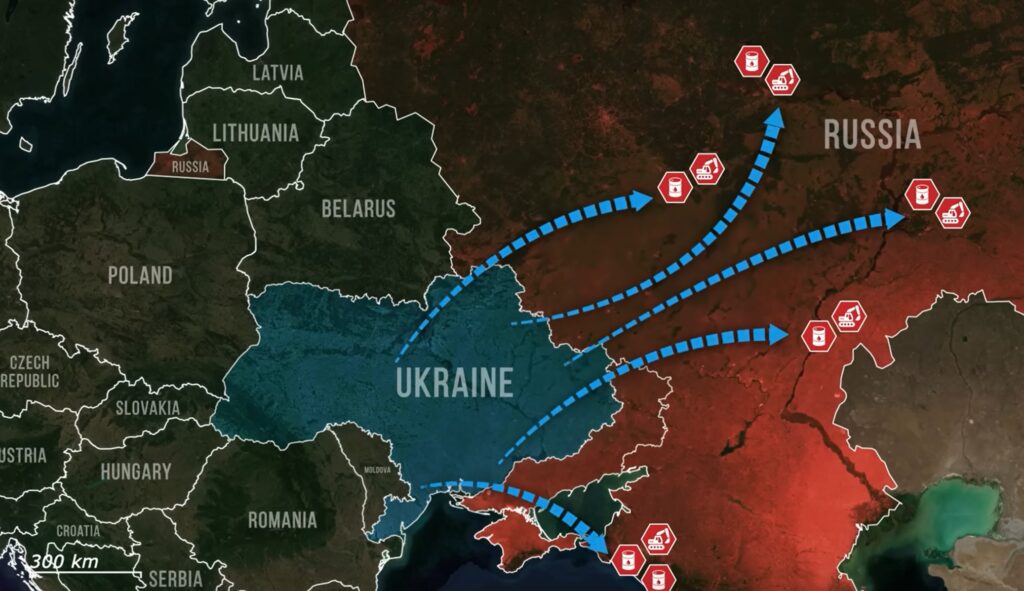
Kyiv strikes just as Russia finishes costly repairs
After concentrating on disabling Russian air defenses and radars in the past month, Ukrainian military leaders patiently allowed Russia to begin costly restoration efforts at previously damaged facilities. Once Russian repair crews and specialized equipment were fully engaged, Ukrainian drones decisively struck again, inflicting severe economic and logistical damage while simultaneously eroding Russia’s internal narrative of security.
Liutyi drones set Samara’s Novokuybyshevsk refinery ablaze
In Samara Oblast, Ukrainian long-range Liutyi drones successfully attacked the Novokuybyshevsk Petrochemical Company, one of Russia’s largest oil-processing plants. Drone strikes severely damaged the facility’s primary oil refining unit, critical for crude purification and fractioning processes into gasoline, diesel, kerosene, and fuel oil. Videos confirm large-scale fires burning uncontrollably for hours, forcing authorities to shut down Samara airport and restrict mobile internet access to control information leaks. The Novokuybyshevsk refinery alone represents a daily capacity of over 177,000 barrels—almost 5% of Russia’s national refining capability.
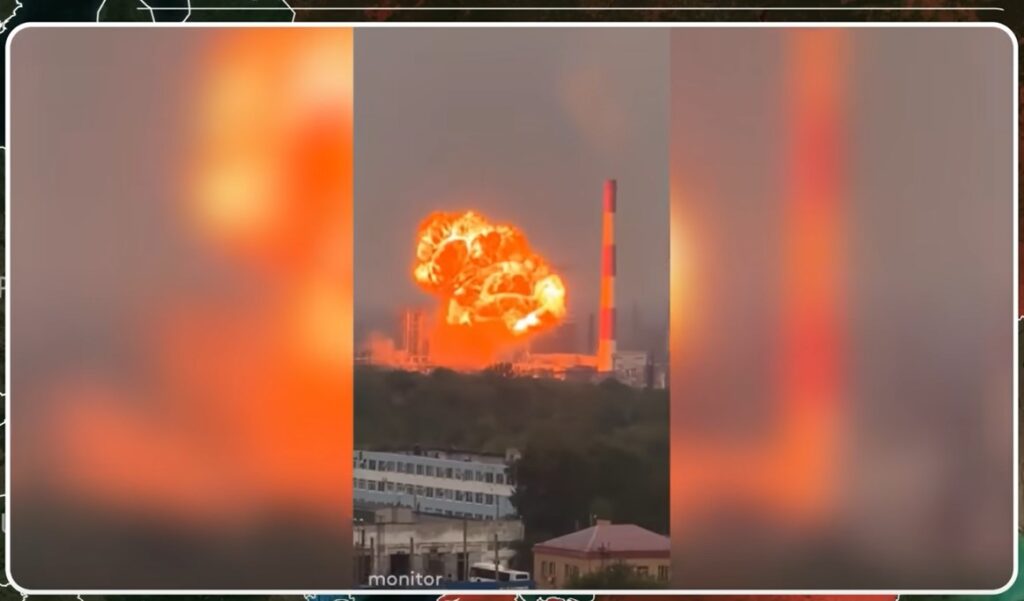
Ryazan refinery hit, fuel lifeline to bomber base severed
In a similar attack, Ukrainian drones struck the Ryazan refinery, number 3 in Russia’s largest oil refineries, processing 340,000 barrels daily. This refinery produces 840,000 tons of aviation kerosene annually, nearly 9% of Russia’s total output, a vital resource for Russian air operations. It is situated next to—and directly supplies—the Dyagilevo strategic bomber airbase, from where Russian bombers target Ukrainian cities and military bases deep behind combat lines. Footage captured massive fires and explosions, contradicting official Russian claims of minor damage.
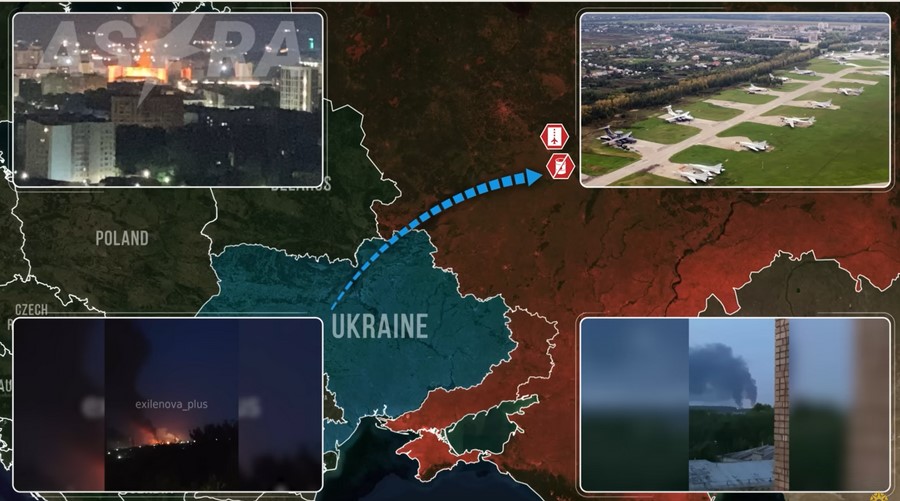
Russian air defenses crack under pressure, Sochi hit
Such strikes significantly degrade Russia’s capability to sustain air operations, directly benefiting Ukrainian defense efforts. Russia’s strained air defenses, already weakened by relentless Ukrainian targeting, are becoming increasingly ineffective, forcing Moscow to deploy outdated systems and rush production of air defense missiles, causing more defects. Such desperation recently resulted in a friendly fire incident near Sochi, where a Russian missile intended for a Ukrainian drone veered toward urban areas, causing civilian casualties.
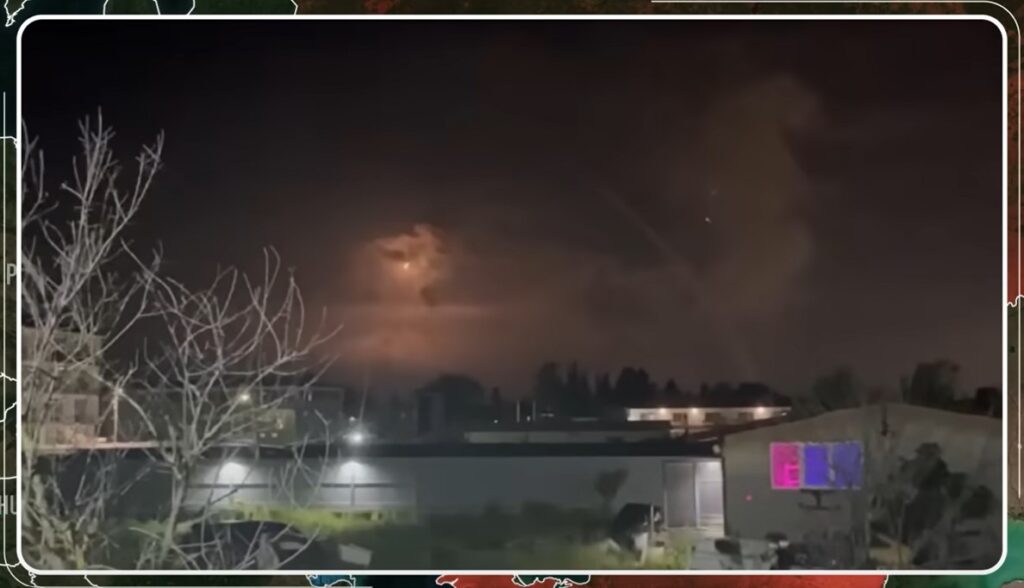
Southern fuel depots in flames after precision drone strikes
Meanwhile, Ukrainian drone strikes inflicted serious damage on oil storage depots in Sochi and Adler, igniting tanks at Lukoil and Rosneft facilities. Krasnodar Governor Veniamin Kondratyev confirmed deployment of over 120 firefighters to control the blaze at a major depot storing 2,000 cubic meters of fuel. Yet, local authorities responded by attempting to identify and punish residents who shared visual evidence of the successful strikes online.

Kstovo and Volgograd refineries burn in renewed attacks
Additionally, Ukraine hit the refinery in Kstovo near Nizhny Novgorod, an already damaged facility previously targeted in January. The renewed strike represents Ukraine’s tactic of exploiting Russian vulnerabilities after costly restoration efforts. Another drone attack sparked a large fire at an oil facility in Volgograd, underscoring Ukraine’s renewed campaign against Russian oil infrastructure.

Repeat-strike tactics drain Russia’s war resources
The strategic secret behind Ukraine’s approach lies in carefully timed repetition strikes. Allowing Russians to rebuild and re-staff targeted refineries before striking again magnifies economic damage and drains resources. The psychological impact on Russian society is equally devastating, publicly demonstrating the Kremlin’s inability to secure vital assets. This persistent vulnerability undermines the government’s image, dismantles official assurances of safety, and weakens public morale.
Overall, these coordinated drone assaults degrade Russia’s military capacity, cut critical fuel supplies, and limit oil export revenues used to fund the war.
In our regular frontline report, we pair up with the military blogger Reporting from Ukraine to keep you informed about what is happening on the battlefield in the Russo-Ukrainian war.




